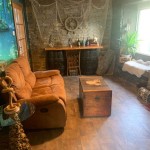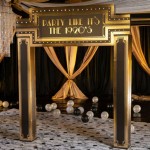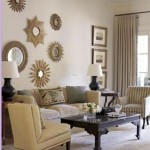How To Decorate a Home Office Room
The transition to remote work has led to a significant increase in individuals establishing home offices. A well-decorated and functional home office is crucial for productivity, focus, and overall well-being. It is not merely a place to complete tasks; it is an environment that should inspire creativity and minimize distractions. Careful planning and thoughtful execution are essential when decorating a home office to ensure it meets both practical and aesthetic needs.
Key Considerations Before Decorating
Before embarking on the decorating process, several key considerations should be addressed. These factors will influence design choices and ensure the final result is tailored to specific needs and preferences. Overlooking these initial steps can lead to dissatisfaction and require costly revisions later.
Space Assessment: The first step involves a thorough assessment of the available space. This includes measuring the room's dimensions, noting the location of windows and doors, and identifying any existing architectural features. Consider how the available space will accommodate essential office furniture, such as a desk, chair, and storage units, while leaving sufficient room for movement. A cramped or cluttered space can negatively impact focus and productivity.
Functionality and Needs: Understanding the specific functional requirements of the home office is paramount. What type of work will be conducted in the space? Will it primarily be used for computer-based tasks, video conferencing, or creative pursuits? The answers will determine the necessary equipment and the layout of the room. For instance, if frequent video conferencing is required, consider the backdrop and lighting to ensure a professional appearance. Similarly, if the work involves significant paperwork, ample storage solutions are necessary.
Budget Planning: Establishing a realistic budget is crucial for avoiding overspending and ensuring the decorating process remains manageable. Prioritize essential items, such as a comfortable and ergonomic chair and a functional desk, and allocate funds accordingly. Consider whether it is feasible to repurpose existing furniture or if new pieces are required. Research different retailers and compare prices to find the best value for money. A detailed budget will help to stay on track and make informed purchasing decisions.
Style and Aesthetics: Determining the desired style and aesthetics of the home office is a matter of personal preference, but it should also align with the overall style of the home. Common styles include minimalist, modern, traditional, and bohemian. Consider the color palette, materials, and decorative elements that will contribute to the desired look and feel. Gathering inspiration from magazines, online resources, and design blogs can help to visualize different options and refine the design concept.
Essential Elements of a Functional Home Office
A functional home office requires more than just a desk and a chair. It involves creating an environment that supports productivity, comfort, and well-being. Paying attention to key elements such as lighting, ergonomics, and storage will contribute to a more efficient and enjoyable workspace.
Ergonomic Furniture: Investing in ergonomic furniture is essential for maintaining physical health and preventing discomfort or injury. An ergonomic chair should provide adequate lumbar support, adjustable height, and comfortable cushioning. A desk should be at the correct height to allow for comfortable typing and minimize strain on the wrists and neck. Consider a standing desk or a desk converter to promote movement and reduce sedentary behavior. Ergonomic accessories, such as a wrist rest and a footrest, can further enhance comfort and support proper posture.
Adequate Lighting: Proper lighting is crucial for reducing eye strain and creating a comfortable work environment. Natural light is ideal, so position the desk near a window if possible. However, supplement natural light with artificial lighting to ensure sufficient illumination throughout the day. Utilize a combination of ambient, task, and accent lighting. Ambient lighting provides overall illumination, task lighting focuses on specific work areas, and accent lighting adds visual interest. Consider using adjustable lamps to customize the lighting levels to suit different tasks and preferences.
Effective Storage Solutions: Maintaining a clutter-free workspace is essential for promoting focus and productivity. Implement effective storage solutions to organize files, supplies, and equipment. Consider using shelves, cabinets, drawers, and storage boxes to maximize space and keep items readily accessible. Vertical storage solutions are particularly useful for maximizing space in smaller offices. Label storage containers clearly to easily locate items when needed. Regularly declutter the office to remove any unnecessary items and maintain an organized environment.
Technology and Connectivity: Ensuring reliable technology and connectivity is essential for seamless workflow. Invest in a high-speed internet connection and a reliable computer system. Consider using a wireless keyboard and mouse to reduce clutter and improve ergonomics. Ensure that the office has sufficient power outlets to accommodate all electronic devices. Utilize cable management solutions to organize cords and prevent tripping hazards. A dedicated printer and scanner may also be necessary depending on specific work requirements.
Personalization and Inspiration: While functionality is paramount, personalizing the home office with elements that inspire creativity and motivation can significantly enhance the work experience. Incorporate artwork, plants, photographs, and other decorative items that reflect personal interests and values. Create a vision board to visualize goals and aspirations. Utilize motivational quotes or affirmations to stay focused and positive. A personalized and inspiring environment can boost morale and increase productivity.
Color Psychology and Home Office Design
The choice of color plays a crucial role in creating a productive and pleasant home office environment. Different colors evoke different emotions and can impact mood, focus, and energy levels. Understanding the principles of color psychology can help to make informed decisions and create a space that supports optimal performance.
Blue: Blue is often associated with calmness, focus, and productivity. It can help to reduce stress and create a sense of serenity. Lighter shades of blue can make a small space feel larger and more open. However, it is important to avoid using excessively dark or cool shades of blue, as they can be perceived as depressing. Blue is a suitable choice for offices where concentration and focus are paramount, such as writing or research-based tasks.
Green: Green is associated with nature, growth, and balance. It can help to reduce eye strain and promote a sense of harmony. Green is a versatile color that can be used in a variety of office settings. Lighter shades of green can create a calming and refreshing atmosphere, while darker shades can add a touch of sophistication. Green is particularly beneficial for individuals who spend long hours working at a computer.
Yellow: Yellow is associated with optimism, creativity, and energy. It can help to boost mood and stimulate the mind. However, it is important to use yellow sparingly, as excessive amounts can be overwhelming or distracting. Consider using yellow as an accent color to add pops of brightness and energy to the office. Yellow is suitable for creative professionals who need a space that inspires innovation and imagination.
White: White is associated with cleanliness, simplicity, and clarity. It can create a sense of spaciousness and light. White is a versatile color that can be paired with other colors to create a variety of effects. However, using too much white can make the office feel sterile or impersonal. Consider adding textures and patterns to break up the monotony of a white space. White is a good choice for individuals who prefer a minimalist and uncluttered environment.
Neutral Colors: Neutral colors such as gray, beige, and brown can provide a calming and grounding backdrop for a home office. They are versatile colors that can be easily paired with other colors to create a variety of effects. Neutral colors can help to create a sense of sophistication and professionalism. Consider adding pops of color with accessories and artwork to add visual interest to a neutral space. Neutral colors are suitable for individuals who prefer a calm and understated environment.
Tips for Maximizing Space in a Small Home Office
Many individuals working from home do not have the luxury of a large dedicated office space. In such cases, maximizing the available space is essential for creating a functional and comfortable work environment. Several strategies can be employed to make the most of even the smallest home office areas.
Vertical Storage: Utilize vertical space by installing shelves, cabinets, and wall-mounted organizers. This allows for storing items without taking up valuable floor space. Floating shelves can be particularly useful for displaying books, plants, and decorative items. Tall bookcases can provide ample storage while also adding visual interest to the room.
Multi-Functional Furniture: Invest in furniture that serves multiple purposes. For example, a storage ottoman can provide seating and also store office supplies. A desk with built-in drawers can help to keep the workspace organized. A folding desk can be easily stored away when not in use, freeing up space in the room. Multi-functional furniture is a practical solution for maximizing space in a small office.
Wall-Mounted Desk: A wall-mounted desk can be a space-saving alternative to a traditional desk. It can be folded down when not in use, freeing up floor space. Wall-mounted desks are available in a variety of styles and sizes to suit different needs and preferences. Consider installing a wall-mounted desk in a narrow hallway or alcove to create a compact office area.
Light and Bright Colors: Use light and bright colors to make the space feel larger and more open. Light colors reflect light and create a sense of airiness. Avoid using dark colors, as they can make the space feel smaller and more enclosed. Consider painting the walls a light color and using light-colored furniture and accessories to create a bright and inviting office environment.
Declutter Regularly: Regularly declutter the office to remove any unnecessary items and maintain an organized environment. Get rid of any paperwork, supplies, or equipment that are no longer needed. Store items that are not frequently used in a separate storage area. A clutter-free office will feel larger and more functional.
By carefully considering these factors and implementing these tips, individuals can create a home office that is both functional and aesthetically pleasing, promoting productivity and well-being. The ideal home office is one that reflects personal style while supporting the demands of the work being performed.
:strip_icc()/home-office-decor-ideas-15-proem-studio-union-square-0527b42d3b864d82a9aa68dc7b982704.jpeg?strip=all)
How To Perfectly Decorate Your Home Office

Design The Home Office Of Your Dreams With Books Decor Photos

Home Office Ideas Turn A Spare Room Into Your Dream Workspace Extra Space Storage

My Home Office Makeover Reveal Sanctuary Decor

Small Home Office Makeover 10 Budget Friendly Decor Ideas Organize By Dreams

20 Inspirational Home Office Decor Ideas

35 Home Office Decor Ideas Designs For A Creative Work Space

20 Home Office Decor Ideas In 2025 Oppein

65 Small Home Office Ideas

45 Best Home Office Ideas Decor Photos
Related Posts







